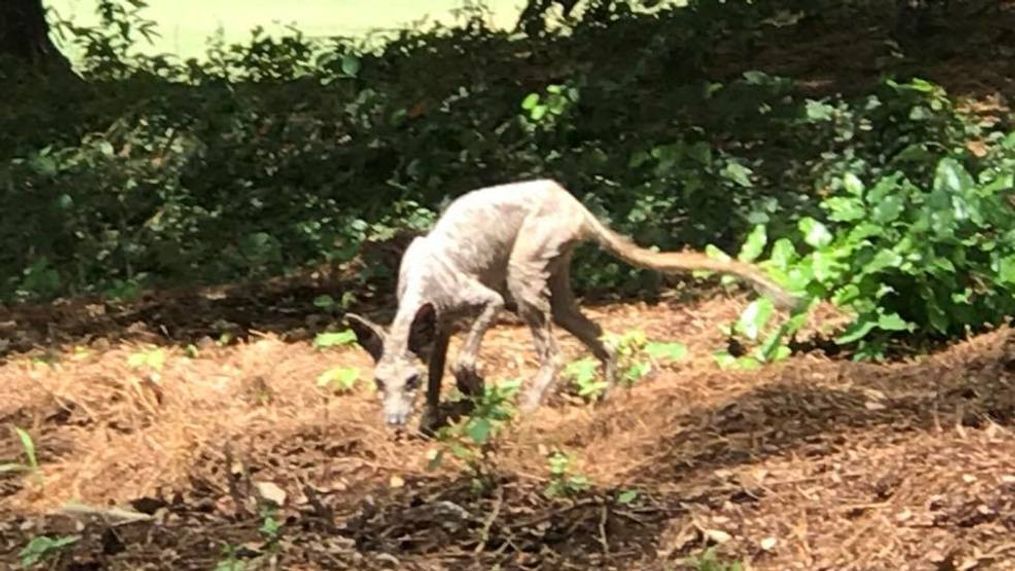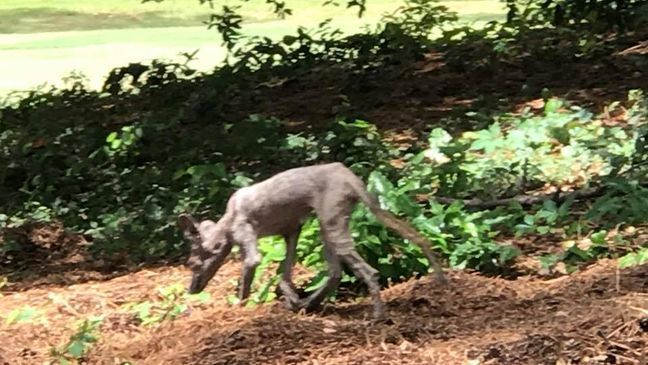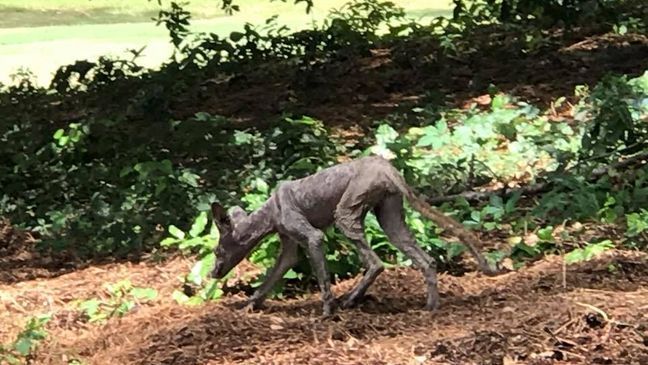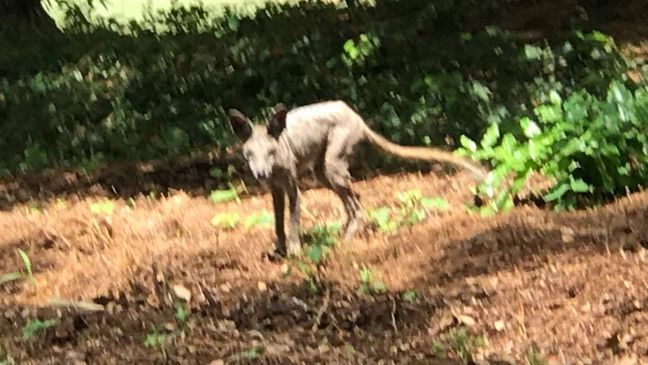Chupacabra in the Carolinas? Or a coyote with mange? We asked an expert.
SANTEE, S.C. (WCIV) - Photos taken by a South Carolina golfer Sunday in Santee have people asking, "What in the world is that?"
Doug Stewart says he was playing a round of golf at Santee Cooper Country Club when he spotted the strange-looking creature.
"#ThatAintNoDog," Stewart wrote in a Facebook post that has now been shared more than 1,200 times.
Some people commenting on Stewart's photos speculated the hairless, dog-like animal could be the mythical Chupacabra, a hairless beast most commonly associated with the Caribbean, Mexico and Central America.
Chupacabra in Spanish means "goat sucker," in reference to the first reported sightings of the creature following the vampire-esque slaughter of numerous goats in Puerto Rico in 1995.
There has never been a confirmed sighting of a Chupacabra.
Far more have speculated, however, that what Stewart saw is not something from folklore, but rather a coyote suffering from a severe case of mange. An authority on the matter agrees.
"It's a canine with mange, it’s not a Chupracabra. That you can put to bed," says Jay Butfiloski, Furbearer Project manager for the South Carolina Department of Natural Resources.
Butfiloski, who heads up DNR's research and management efforts of coyotes, says it could be a coyote or fox, but it's impossible to say for sure what species of canine it is without examining the animal in person.
"Either way, it has got mange," Butfiloski said Tuesday, adding that mange usually only shows up as a small, irritated patch on the skin.
RELATED |Group reports Bigfoot sighting in North Carolina
A case of mange this severe, Butfiloski says, means the animal will likely die from a secondary infection or starvation, or a combination of both.
"Emaciation is common as the increased scratching, licking, and chewing on their skin can affect the amount of time spent hunting for food," Butfiloski says.
Mange is caused by parasitic mite, which can be spread to people in rare cases, says Butfiloski.
Efforts to reach Santee Cooper Country Club on Tuesday to see if the animal has been removed were unsuccessful.




